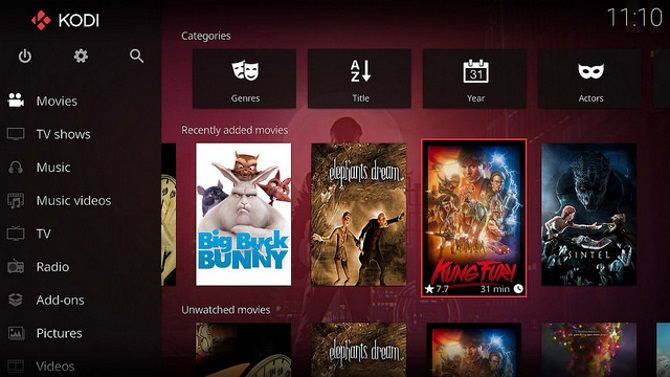

- Standalone media center os portable#
- Standalone media center os software#
- Standalone media center os Offline#
- Standalone media center os windows 7#
Standalone media center os software#
“Kodi® (formerly known as XBMC™) is an award-winning free and open source (GPL) software media center for playing videos, music, pictures, games, and more. In researching how one might play digitized movies with a Rasp Pi, I came across OpenELEC which is an embedded Linux operating system built around Kodi: the open source entertainment media hub. Of course, playing movies first came to mind, but I didn’t want to use a DVD player because that would take up precious space in our already compact RV. I started wondering what I could design that would enhance our RVing experience. When I realized it had an HDMI input, I immediately thought of the Raspberry Pi. When we bought our RV, it had a TV/monitor that we really didn’t use.
Standalone media center os portable#
When we are in a commercial campground, we'll connect up to at least power which gives us the ability to watch movies or listen to music using a portable media center that I will describe in this article. We usually dry camp without connecting up to any services like power, water, or sewer, but sometimes we need to take showers or do laundry so we opt for a commercial campground. Resolution: The USB flash drive must be connected prior to launching the wizard.My wife and I like to travel in our small Rialta RV.
Standalone media center os Offline#
Problem: When running the offline media wizard the attached USB flash drive is not detected.

Format the USB Flash stick as NTFS first. Resolution: If the USB flash drive is formatted using a FAT32 partition then no file can exceed 4 GB in size (which is common with the WIM). Problem: The formatted USB flash drive may not have enough space to hold the image. Workaround this by changing the %TEMP% variable path to another drive with sufficient space, or leverage a remote console on a workstation with sufficient C: drive space to stage the content. If the offline media wizard is run on a server where the C:\ is a small partition to host just the OS, you may run out of space during the media creation without a clear error. Resolution: Sufficient disk space is required to stage all the content in the current logged on users %TEMP% directory. Problem: You run out of disk space while trying to create the offline media. Resolution: The error resulted because not all packages had replicated successfully to the distribution points being used for media creation.

Problem: An error was noted that the USB disk being used was too small but in reality had plenty of space. This problem can happen with any distribution point if appropriate permissions are not in place. The problem was due to the users account (in this case an admin on the system) not having permissions to the SMSPXEImages$ share. Resolution: The offline media was being created from content located on a branch distribution point. Problem: You see an error in the CreateTSMedia log stating ‘directory name is invalid’. Note: The value # in the script should be replaced with the drive number. The resulting partition will be formatted with an NTFS partition using the script below. Resolution: You can create a 32 GB partition on a larger USB drive by using diskpart and the following script. Problem: >32 GB USB disk won’t work to create TS media. Resolution: This is a known issue with three potential workarounds documented at
Standalone media center os windows 7#
Problem: Cannot create offline media from an SCCM 2007 Admin console running on a Windows 7 workstation. Let’s walk through the process of creating USB stand-alone media and then go through a few requirements that need to be in place to avoid problems. But there are a few requirements for using USB stand-alone media successfully. Because of smaller size, easier portability and convenience, USB media is often preferred over DVD’s even when image sizes don’t require DVD spanning. To avoid swapping DVD’s during imaging with larger stand-alone media based images, it is convenient to use a USB thumb drive. For this reason, stand-alone media can be quite large – often exceeding the space available on a DVD. This includes the task sequence and any packages or other items referenced by the task sequence. Using stand-alone media doesn’t require access to the ConfigMgr infrastructure during imaging because all components needed during the imaging process are copied to the stand-alone media and available locally. You will also see this referred to as using offline media. One option includes support for imaging systems that are completely disconnected from the network using stand-alone media. Operating System Deployment (OSD) in System Center Configuration Manager 2007 offers several options for deploying images to target systems. Steve Rachui | Senior Premier Field Engineer Great new post over on The Configuration Manager Support Team Blog.


 0 kommentar(er)
0 kommentar(er)
